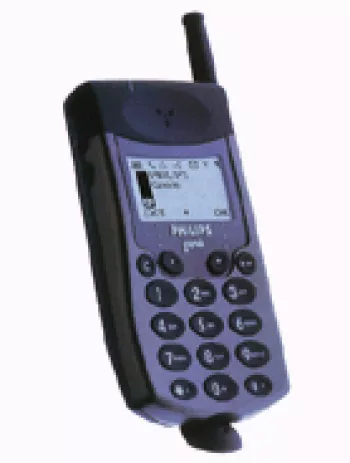
Design and Build Quality
The Philips W737 features a compact and sleek design characteristic of early 2010s smartphones. With dimensions of 128 x 65 x 9.9 mm and a weight of 172 g, the W737 is portable and easy to handle. Despite its relatively hefty weight for its size, the dual SIM capability and sturdy build make it a practical choice for users needing to balance work and personal communication on a single device. The phone is available in a conventional black color, appealing to users looking for a professional and classic design.
Display
The device is equipped with a 4.3-inch TFT display, offering a resolution of 540 x 960 pixels. With a ~256 ppi density, the screen provides decent clarity and color reproduction, suitable for viewing media and browsing the web. The display covers approximately 61.3% of the device's front, which was typical for smartphones during its release period. While not comparable to modern high-resolution displays, it was more than sufficient for everyday tasks and media consumption in its era.
Performance
Under the hood, the Philips W737 is powered by a Qualcomm MSM8225 Snapdragon S4 Play chipset. This includes a dual-core 1.2 GHz Cortex-A5 CPU and an Adreno 203 GPU. While these specifications may seem modest by today's standards, they were quite capable for typical smartphone tasks like browsing, social media, and even light gaming in the early 2010s. The W737 comes with 4GB of internal storage, with around 3GB available to users, which can be expanded thanks to the dedicated microSDHC slot, allowing for additional storage for apps and media.
Camera
The Philips W737's camera setup includes a 5 MP main camera with autofocus and LED flash, capable of recording video at 480p at 15fps. These features allow the camera to capture reasonable quality photos and videos under adequate lighting conditions, which was suitable for regular use at the time of its release. While there is no specification for a front-facing camera, the device does support basic video functionalities, enough for modest selfies and video calls.
Battery Life
The device is powered by a removable Li-Ion 2400 mAh battery, which provides a talk time of up to 10 hours and 30 minutes on 3G networks. This battery capacity was competitive at the time and generally provided a solid day’s use for average users who balanced calls, messages, and some app usage throughout the day. The removable battery feature also adds practical value, offering the flexibility to swap out batteries when needed.
Software
Running on Android 4.0.4 Ice Cream Sandwich, the Philips W737 brings a familiar interface with access to a vast array of apps via the Google Play Store. Though outdated by newer Android standards, the operating system at the time offered smooth navigation and adequate user experience, catering to most fundamental smartphone needs such as email, navigation, and social networking.
Connectivity
The Philips W737 provides various connectivity options including GSM / HSPA network technology, capable of 3G HSDPA 850 / 2100 bands, and speeds of up to 7.2 Mbps. It supports Wi-Fi 802.11 b/g for wireless internet access, Bluetooth 3.0 for wireless data transfer, and GPS for positioning services. However, it lacks modern features such as NFC or radio support but maintains a microUSB 2.0 port for charging and data transfer. The device also includes a 3.5mm jack for audio connectivity, providing flexibility for users to use traditional audio peripherals.
Additional Features
For enhanced user experience, the Philips W737 includes essential sensors such as an accelerometer and proximity sensor. These contribute to automatic brightness adjustment and orientation changes, offering a personalized user experience. Such features round off its capabilities as a utility-focused device aimed at delivering functional user satisfaction over sheer feature richness.
Conclusion
The Philips W737 serves as a reflection of early 2010s smartphone design and capability, offering dual-SIM functionality, a reliable build, and adequate performance for that era's demands. While it may not compete with modern smartphones in terms of screen resolution, processing power, or camera capabilities, it stands out as a device designed with practicality, endurance, and user-friendliness in mind. Its balance of feature set, combined with the Android Ice Cream Sandwich OS, makes it a noteworthy mention for those reminiscing about the transitional phase of smartphone technology.
Key Features of Philips W737
- Dual SIM capability with support for GSM and HSPA networks
- 4.3-inch TFT display with a resolution of 540 x 960 pixels
- Powered by Android 4.0.4 (Ice Cream Sandwich) operating system
- Equipped with Qualcomm MSM8225 Snapdragon S4 Play chipset
- Dual-core 1.2 GHz Cortex-A5 CPU for smooth performance
- Expandable storage via microSDHC slot
- 5 MP main camera with autofocus and LED flash
- Includes a front-facing camera for selfies
- 2400 mAh removable battery with up to 10 hours and 30 minutes of talk time on 3G
- Features a 3.5mm audio jack and loudspeaker for sound
- Wi-Fi 802.11 b/g and Bluetooth 3.0 with A2DP support
- GPS functionality for location services
Philips W737 Disadvantages
- Outdated Android 4.0.4 (Ice Cream Sandwich) operating system.
- Low internal storage with only 4GB, and approximately 3GB user available.
- Low video recording resolution at 480p@15fps for the main camera.
- No NFC support for contactless payments.
- No FM radio feature.
- Limited screen-to-body ratio of approximately 61.3%.
- Older Bluetooth version 3.0.
- Discontinued and no longer supported with updates.


View Also
More Phones
All Rights Reserved +14266 Phones © Mobilawy 2025

























